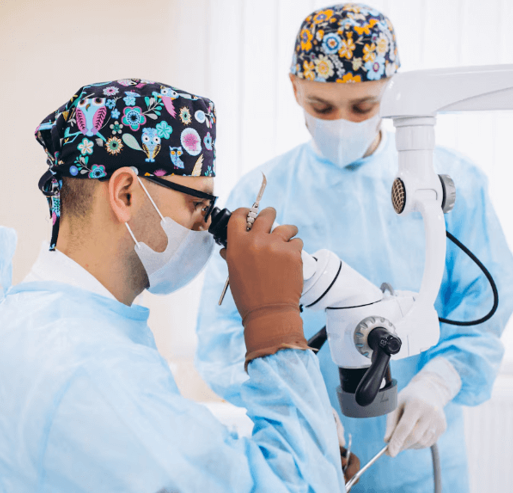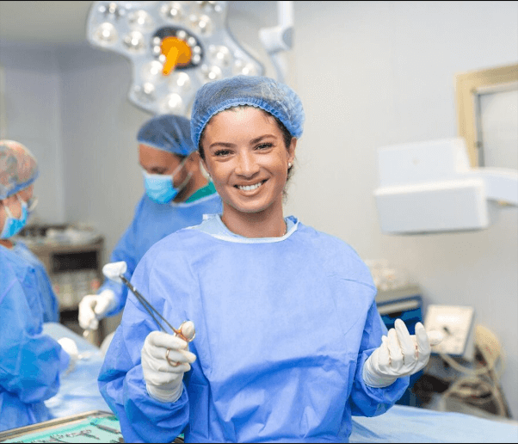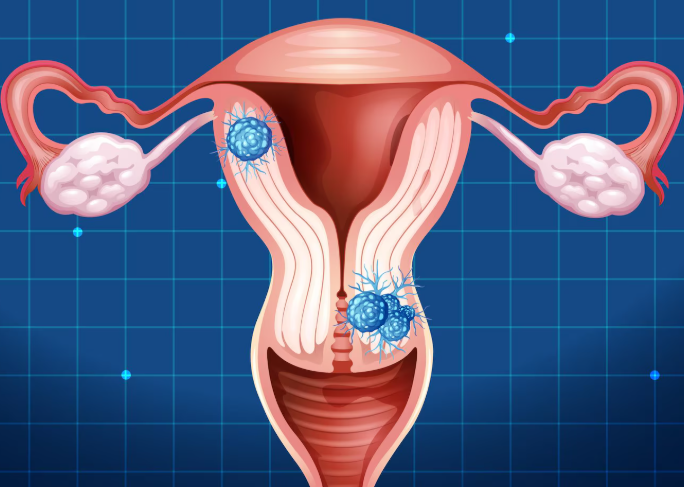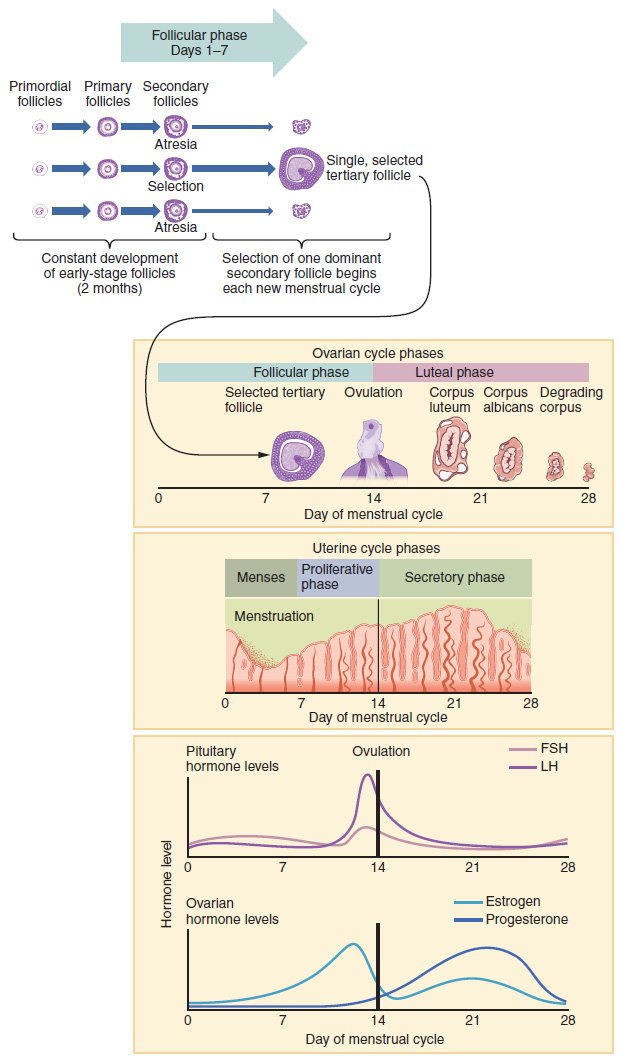Treatment Overview
Robotic-Assisted Fibroid Surgery in Korea is one of the most advanced options available for the treatment of uterine fibroids. This technique combines minimally invasive laparoscopy with precision robotic technology, allowing surgeons to perform highly delicate procedures with unprecedented accuracy. Korea is internationally recognized for its mastery of robotic-assisted gynecologic surgery, offering patients world-class care, specialized expertise, and cutting-edge equipment.
Uterine fibroids — benign tumors of the uterine muscle — are a common condition among women of reproductive age. These growths can cause heavy menstrual bleeding, pelvic pain, infertility, and pressure on nearby organs. Robotic-assisted fibroid removal offers women a solution that combines precision, safety, and efficiency while preserving uterine health and fertility potential.
Prominent Korean hospitals, including Samsung Medical Center, Asan Medical Center, Severance Hospital, CHA Bundang Women’s Hospital, and Ewha Womans University Mokdong Hospital, are leaders in robotic-assisted myomectomy. They integrate advanced surgical robotics with experienced multidisciplinary teams to deliver highly effective, customized fibroid treatment.
Purpose & Benefits
The primary goal of robotic-assisted fibroid surgery is to provide precise removal of fibroids while preserving uterine function and minimizing recovery time. This method is ideal for complex cases, including fibroids that are large, numerous, or in difficult-to-reach locations.
Key benefits include:
- Exceptional Precision: Robotic systems offer superior dexterity and fine movement control for accurate fibroid removal.
- Minimally Invasive: Small incisions result in less pain, reduced scarring, and quicker recovery.
- Preservation of Fertility: The uterus remains intact, supporting future conception.
- Enhanced Visualization: 3D high-definition imaging enables surgeons to see fibroids clearly.
- Reduced Blood Loss: Advanced instruments and controlled dissection minimize intraoperative bleeding.
- Faster Recovery: Many patients return to normal activities within one to two weeks.
- Shorter Hospital Stay: Most robotic-assisted surgeries require less than two days in hospital.
Korea’s robotic-assisted fibroid removal programs are designed to balance high surgical precision with patient comfort and safety, resulting in superior outcomes.
Ideal Candidates
Robotic-assisted fibroid surgery is suitable for women who require a highly precise fibroid removal procedure with minimal invasiveness. Ideal candidates include:
- Women with symptomatic fibroids causing heavy menstrual bleeding, pelvic pain, or pressure symptoms.
- Patients with large, multiple, or complex fibroids.
- Women who wish to preserve fertility.
- Patients seeking minimally invasive surgery with shorter recovery time.
- Women requiring a personalized surgical approach tailored to their condition.
Korean hospitals perform extensive preoperative assessments, including high-resolution imaging, laboratory testing, and fertility evaluations, to create individualized surgical plans.
Possible Risks & Complications
Robotic-assisted fibroid surgery is highly safe, but like any surgery, it carries potential risks:
- Bleeding: Rare, though possible in large or vascular fibroid cases.
- Infection: Minimized by sterile surgical protocols.
- Adhesion Formation: Reduced with robotic precision but still possible.
- Damage to Surrounding Organs: Rare due to advanced imaging and precision controls.
- Fibroid Recurrence: Possible, but complete excision reduces recurrence risk.
Korean hospitals mitigate these risks with advanced technology, meticulous planning, and detailed postoperative monitoring.
Techniques Used
Robotic-assisted fibroid surgery in Korea combines advanced technology and refined surgical methods:
- Robotic Laparoscopy: Provides superior dexterity, precision, and range of motion compared to traditional laparoscopy.
- 3D High-Definition Imaging: Enhances visualization of fibroids and surrounding structures.
- Energy-Based Instruments: Improve precision and minimize tissue damage.
- Single-Port Robotic Surgery: Reduces incision size and enhances cosmetic outcomes.
- Precision Suturing: Restores uterine integrity and supports reproductive health.
These methods allow surgeons to tailor procedures to each patient’s specific fibroid type, size, and location, ensuring optimal outcomes.
Recovery & Aftercare
Recovery after robotic-assisted fibroid surgery in Korea is generally faster and more comfortable than traditional open surgery. Most patients return to normal activities within 1–2 weeks, experiencing minimal pain and scarring.
Aftercare includes:
- Postoperative monitoring of uterine healing.
- Personalized pain management.
- Lifestyle advice for optimal recovery.
- Fertility counseling for patients planning pregnancy.
- Follow-up imaging to ensure complete fibroid removal and detect recurrence.
Korean hospitals emphasize comprehensive aftercare, ensuring physical healing and patient confidence in long-term results.
Results & Longevity
Robotic-assisted fibroid removal delivers long-lasting relief from fibroid symptoms while preserving fertility. Korean hospitals report high success rates, low complication rates, and reduced recurrence.
Long-term outcomes include normalized menstrual cycles, relief from pelvic discomfort, improved fertility potential, and an enhanced quality of life. These advantages make robotic-assisted fibroid surgery one of the most advanced and effective treatments available.
Treatment Process in Korea
- Consultation: Thorough assessment of symptoms, medical history, and diagnostic imaging.
- Preoperative Planning: Customized surgical plan designed to meet the patient’s needs.
- Surgical Procedure: Robotic-assisted laparoscopic myomectomy with precision excision of fibroids.
- Recovery: Structured postoperative care with minimal downtime.
- Follow-Up: Imaging and consultations to ensure complete recovery and monitor uterine health.
Korean hospitals ensure a patient-centered, efficient, and safe treatment process.
Cost Range
Costs for robotic-assisted fibroid surgery in Korea vary depending on the hospital and procedure complexity:
- Standard Robotic Myomectomy: ₩9,000,000 – ₩14,000,000 KRW ($6,800 – $10,500 USD)
- Single-Port Robotic Surgery: ₩10,000,000 – ₩15,000,000 KRW ($7,500 – $11,300 USD)
These costs reflect Korea’s advanced surgical expertise, cutting-edge robotics technology, and exceptional patient care.
Popular Clinics for Robotic-Assisted Fibroid Surgery in Korea
- Samsung Medical Center – Pioneers in robotic-assisted gynecologic surgery.
- Asan Medical Center – Leaders in high-precision robotic myomectomy.
- Severance Hospital – Experts in fertility-preserving robotic fibroid surgery.
- CHA Bundang Women’s Hospital – Specializes in personalized robotic-assisted procedures.
- Ewha Womans University Mokdong Hospital – Integrates advanced technology with holistic women’s care.




